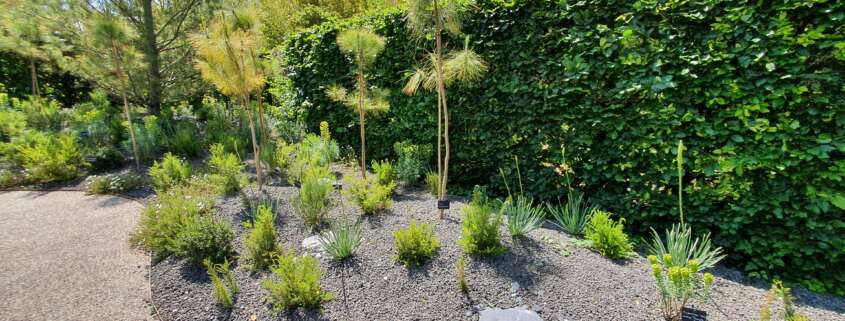Hedges
The hedges seem to gradually disappear from the landscape. Blame it on the mechanization of agriculture. But in recent years, it has become fashionable to go back… Are we going to once again develop a “hedge plants” section like in the old days with thujas? We’re not there yet!
Hedges
The history of agricultural hedges goes back several centuries, and these elements of the rural landscape have played an important role in land management and in the preservation of biodiversity.
Already in the Middle Ages, hedges were often planted to demarcate fields and protect crops from wild animals. They also served as fences for livestock. At that time, hedges were mainly made up of local species.
During the 17th and 18th centuries, the development of agriculture led to the multiplication of cultivated plots. Hedges were used to divide these plots and protect crops from the wind.
In the 19th century, the Industrial Revolution brought significant changes to agriculture. The use of large machines in the fields has led to the uprooting of many hedges to facilitate the passage of equipment.
At the beginning of the 20th century, policies of the time encouraged grubbing to increase the size of plots and increase productivity. The consolidation that began in the 1950s reinforced this uprooting, often indirectly financed by communities.
We can imagine the consequences on biodiversity, the landscape and water quality…
Garden side
We go back to the Renaissance, in the 1500s, this is where hedges slightly left their functional side to become decorative or obscuring.You know the rest… In the last century, with galloping industrialization, our grandparents moved closer to cities to come and work there. They built nearby, and to be quiet, hid from the neighbor with mainly… Thuja trees. For those who knew garden centers in their early days, the “thuya” section regulated autumn turnover…But this concealment technique required regular pruning, and what’s more, the Thuya plicata ‘Atrovirens’ ended up getting diseases. It was a stain in the hedge… Welcome to the concealment panels!With a consumer who no longer wants to bother with gardening work, the hedge has very little future…However, recently, we have finally become aware of some ecological issues. The hedge is beneficial for a whole bunch of reasons and is gradually becoming an important element of the decor again.
Benefits…
Since the 1950s, and this famous “consolidation” which consisted of grouping land together to facilitate the expansion of agriculture, hedges have left the countryside. 70% of them have disappeared since this period. Cumulatively, we arrive at 1.4 million kilometers burned or torn off for “a good cause”.Despite a financial incentive organized by communities to replant, the decline continues with 1.5% less each year!And yet, the hedge is home to a whole bunch of little critters that promote biodiversity.Hedges are also beneficial for water and the protection of waterways. We move on to carbon storage and the many ecological advantages of these alignments.On the community side, we are increasingly encouraging farmers and individuals to replant hedges. Depending on the region, more than 50% of the financing is covered.Priority is given to “local” species and thuja or Photonia are not really welcome in these funding programs.
Awareness
In all cases, awareness is important among the general public.On April 26, 2023, the CGAAER report on hedges recommends the establishment of a charter to support actions to create and protect hedges. They are even considered a “lever of ecological planning”. The times are changing…With this increased communication and this important awareness, there is no doubt that our customers will be a little more informed on the subject.They have the right to expect answers from plant stakeholders. The hedge is slowly taking on the appearance of a “national cause”, and there is no doubt that our points of sale will be keen to promote this new trend.The only downside is that the offer will have to expand compared to what we usually offer. Laurels, boxwoods and other conifers will be accompanied by more local species such as cornus, hazel and dogwood… A price adapted to the quantity will perhaps also force us to offer slightly smaller plants, with bare roots?And the advice or technical sheets will make it a little easier for garden consumers to find their way around.The hedge department could well relaunch in the years to come… Do you believe it?




Leave a Reply
Want to join the discussion?Feel free to contribute!